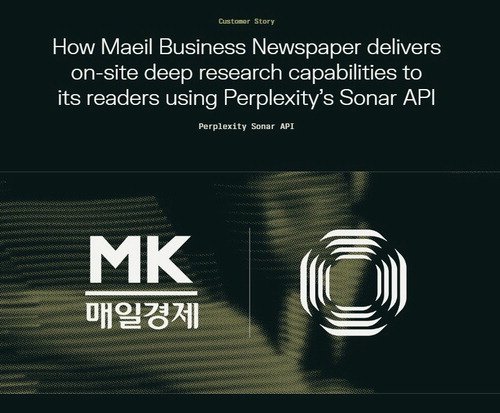Purple Lexity, an American artificial intelligence (AI) search company, cited Mail Business as an excellent example of media innovation and improved independent experiences. Purple Lexity recently introduced the number of searches and users in just a few months after Maekyung introduced its search API “Sona” through an introduction to excellent collaboration cases on its official website.
Specifically, in a post titled “How Maeil Business Newspaper provides readers with in-depth search functions in the site with Sona API,” Purple Lexity evaluated that Maekyung has built an AI-based search function to increase readers’ accessibility and utilization at the same time.
In particular, the key strength was that the source of the original article was clearly informed of the answer through a question-oriented search in the form of a sentence rather than a simple keyword match.
Maekyung has been pushing for search innovation since last year to find the answer that readers want easily and accurately in more than 600 articles a day. Existing keyword searches were easy to miss context, and early AI solutions were less reliable due to hallucination problems. In response, Maekyung worked with Purple Lexity, which specializes in AI search, to explore the entire archive of articles that Maekyung has accumulated over the past 60 years when readers enter questions, presenting answers that fit the intention of the question and marking the sources of related articles together.

Purple Lexity introduced Maekyung’s principle that “independent trust is secured when the generated answers are accurately linked to the source of internal articles.” It explained that it provided immediate services to questions that required extensive information processing and built services so that readers with various expertise could understand them, improving the speed and quality of information access at the same time. The performance before and after the introduction of AI search was confirmed by figures. As of July this year, the total search volume on the website of Maekyung surged 64.4% compared to the beginning of the year, and the number of search users increased 25.0% during the same period. In particular, AI knowledge search in Maegyeong accounted for about half of the total search volume as of July.
There was also a clear change in the usage behavior of readers every day. “AI presents related questions in addition to answering questions in the AI knowledge search window, and the proportion of clicking on them accounts for about a quarter of all searches,” said an official at MaekyungAX. “Readers have begun to actively utilize the follow-up search path proposed by AI beyond simply reading articles.” An official from Maekyung also said, “Readers are using it not only as a context-based search but also as a tool for financial technology and life-oriented analysis while obtaining detailed and reliable answers even with simple questions.”
The actual Maekyung site function was also reorganized accordingly. Reading the body of a paper article creates a Chain of Search that automatically generates relevant recommendation questions to continue curiosity, and an AI search box is placed separately in each article to make it easier for readers to ask customized additional questions. In addition, Purple Lexity emphasized that this case is a model of how the collaboration between media companies and AI companies innovates their own experiences.
[Reporter Ko Min-seo]












































